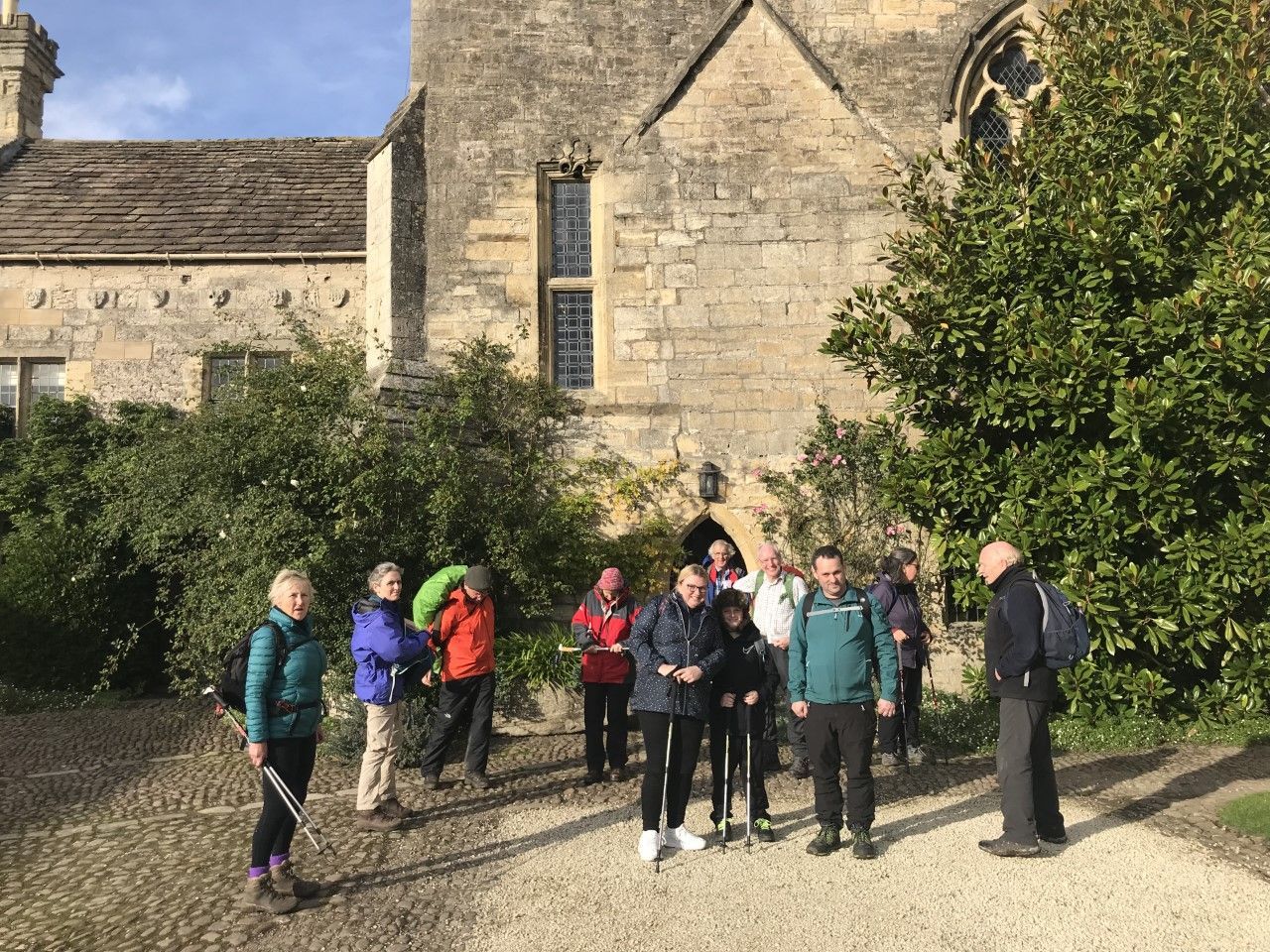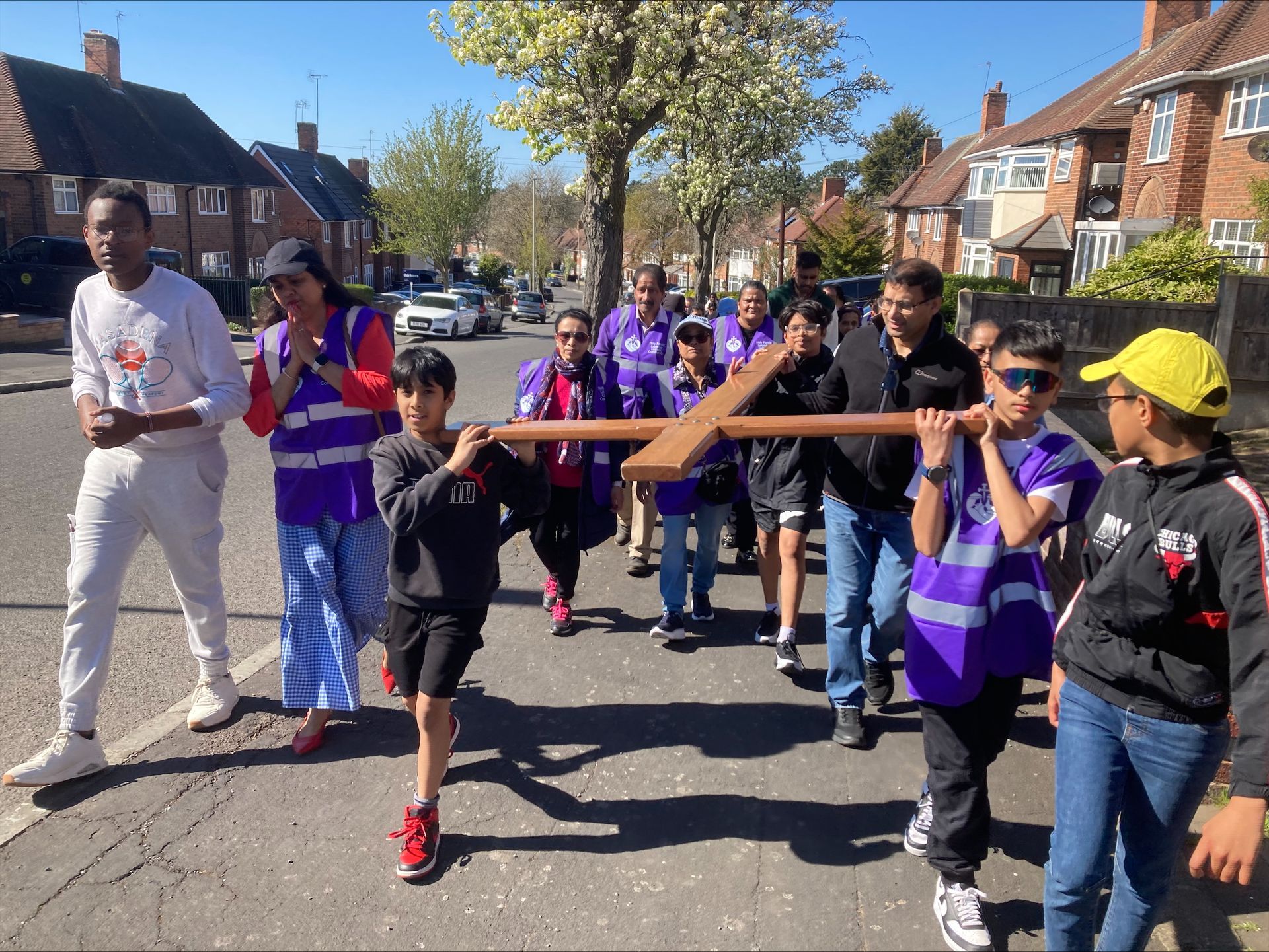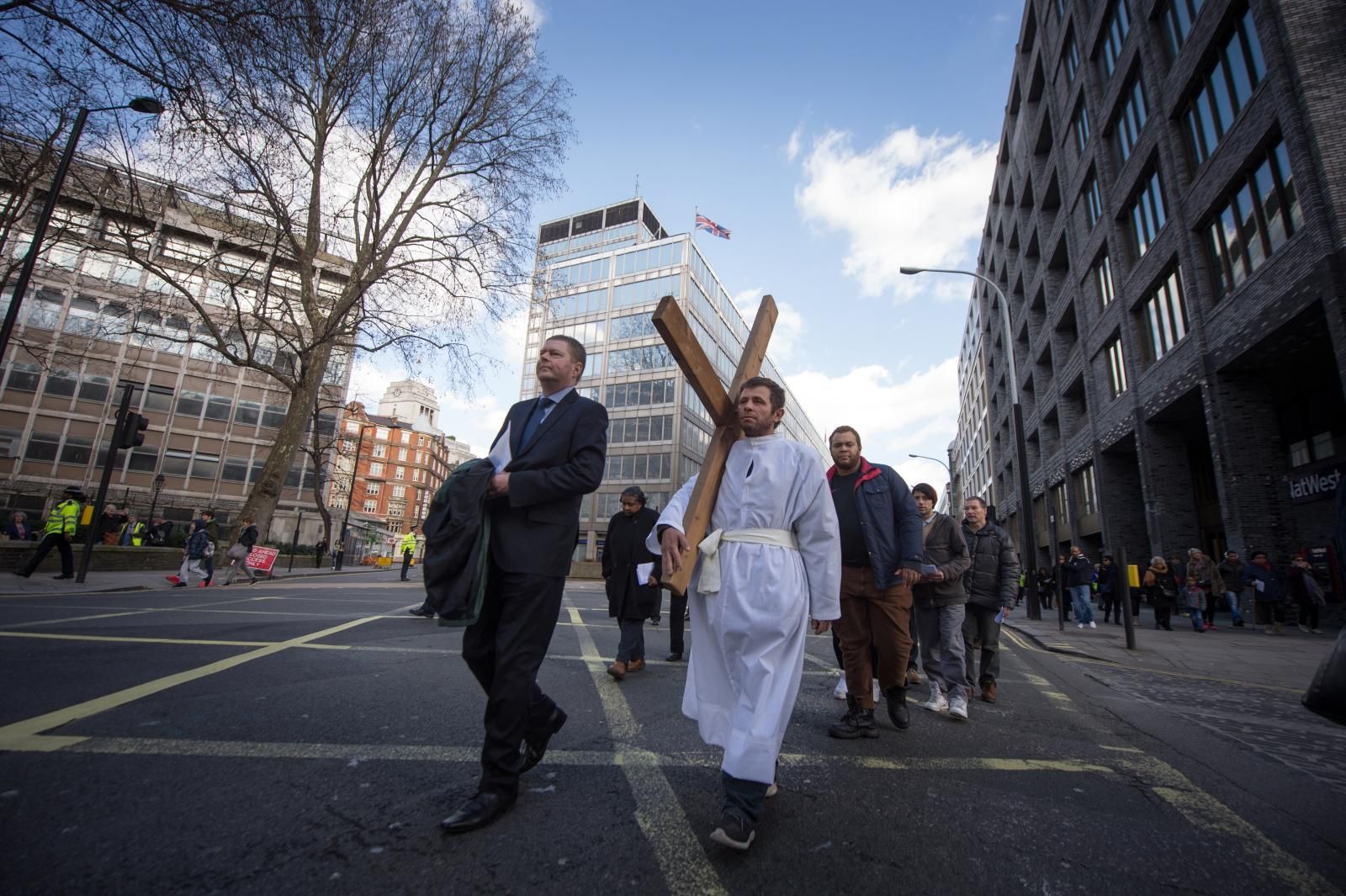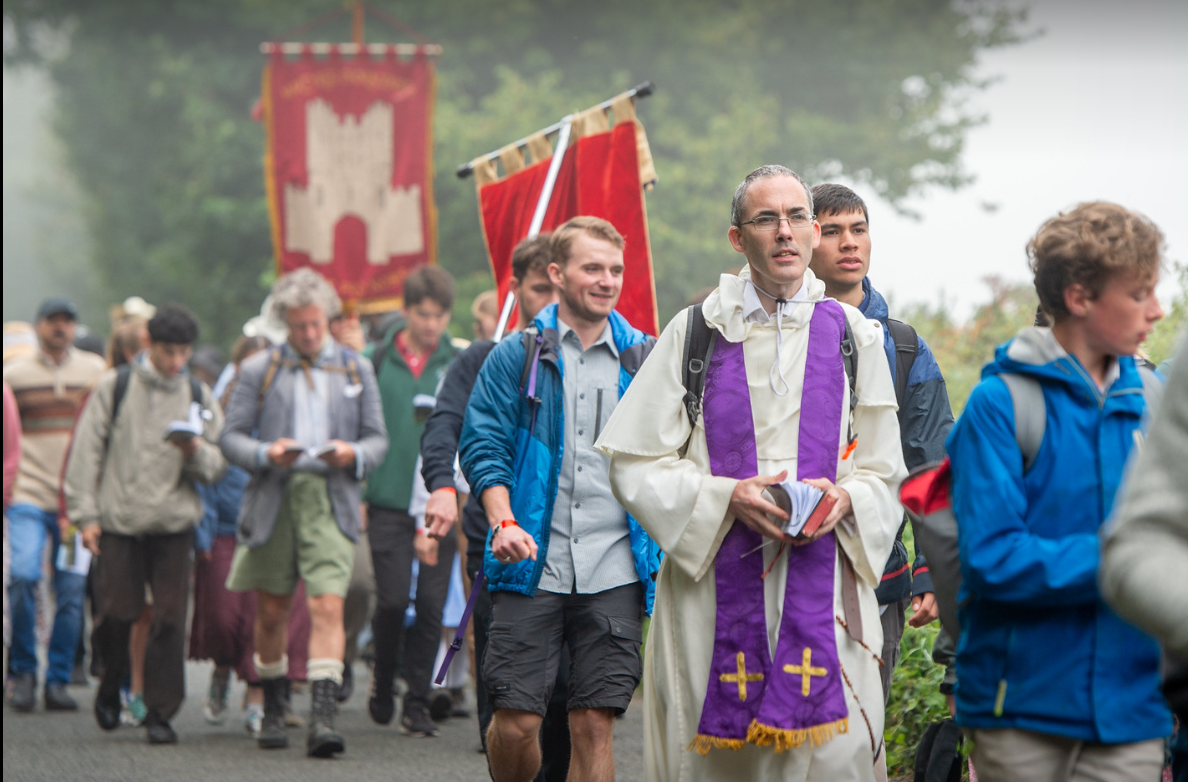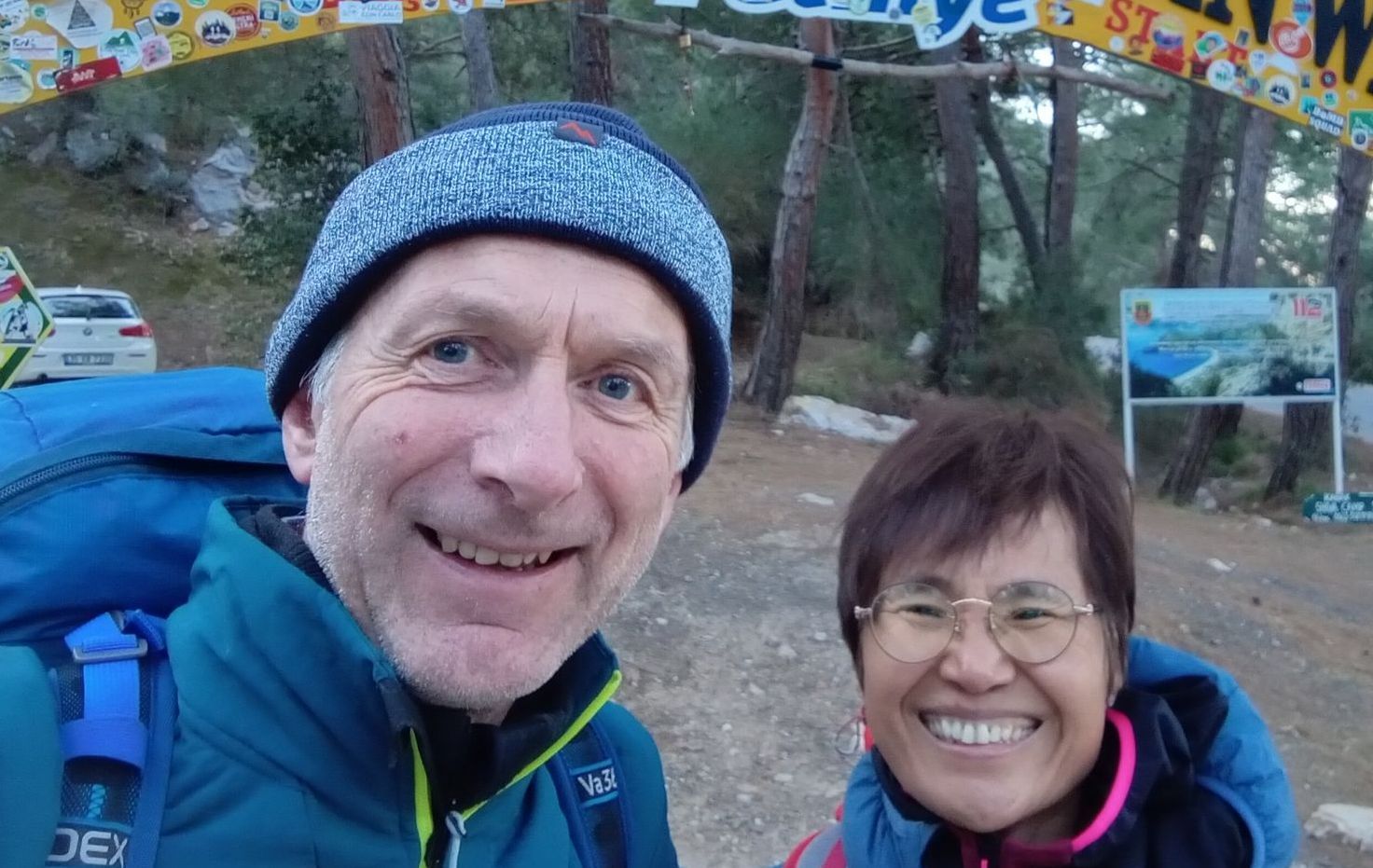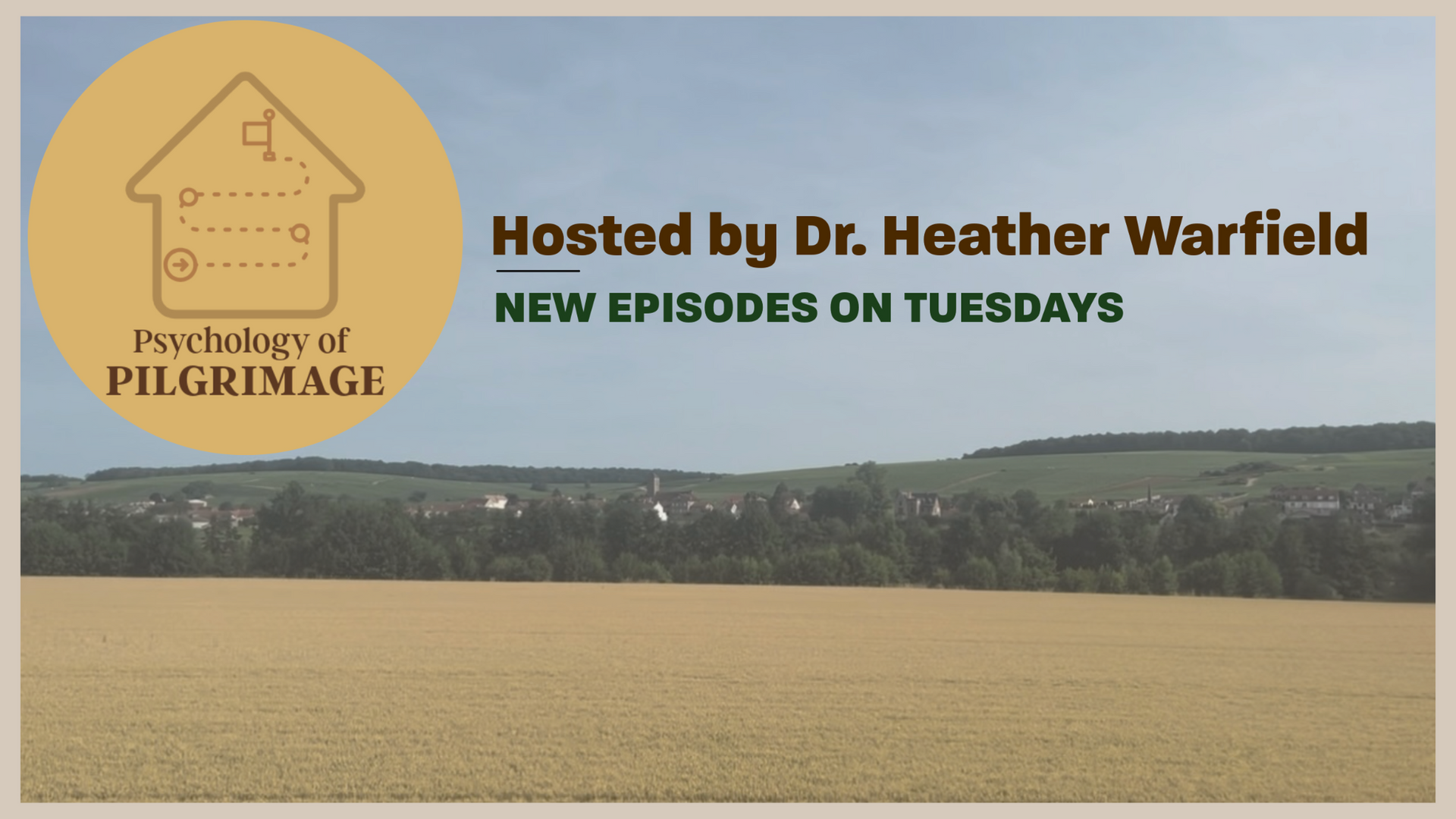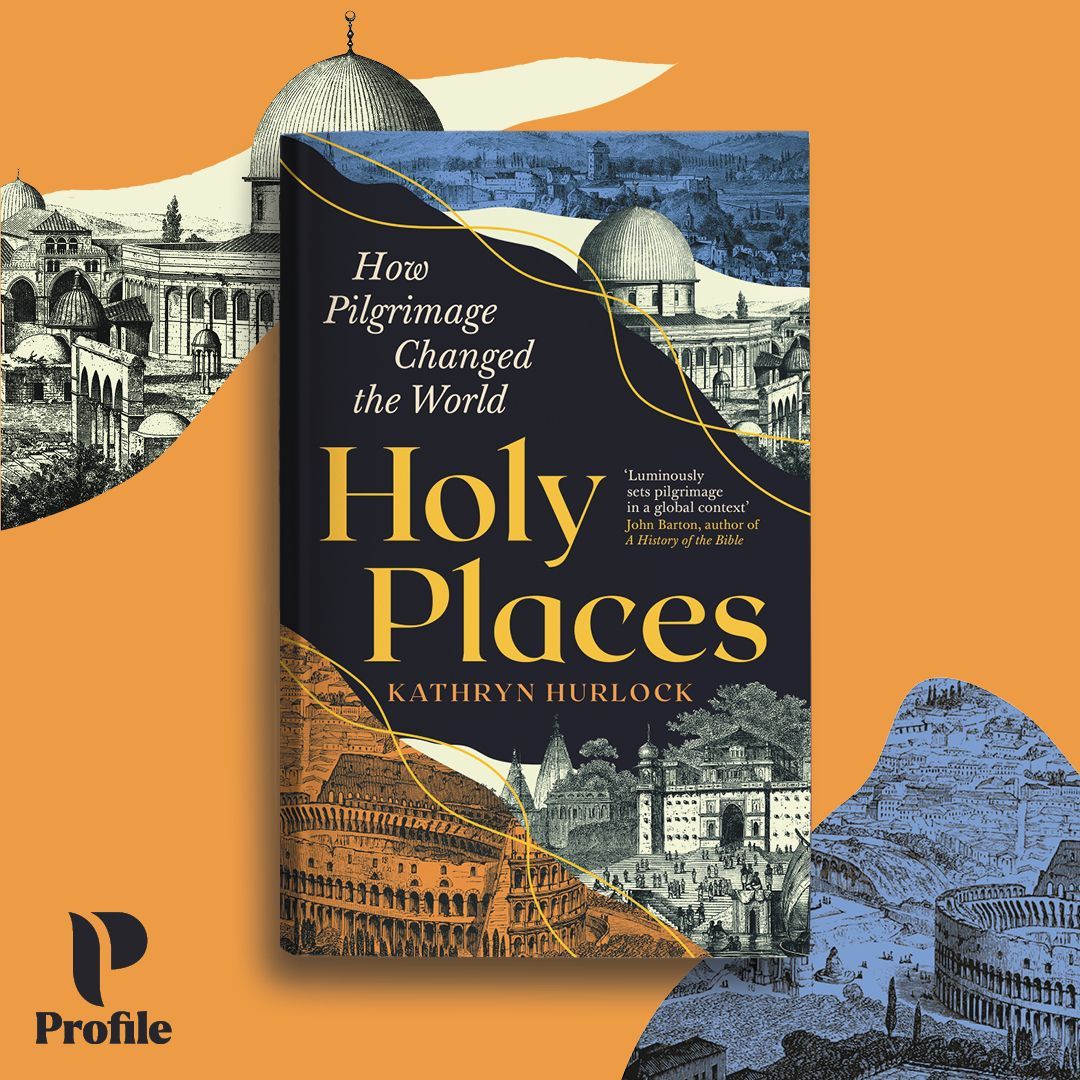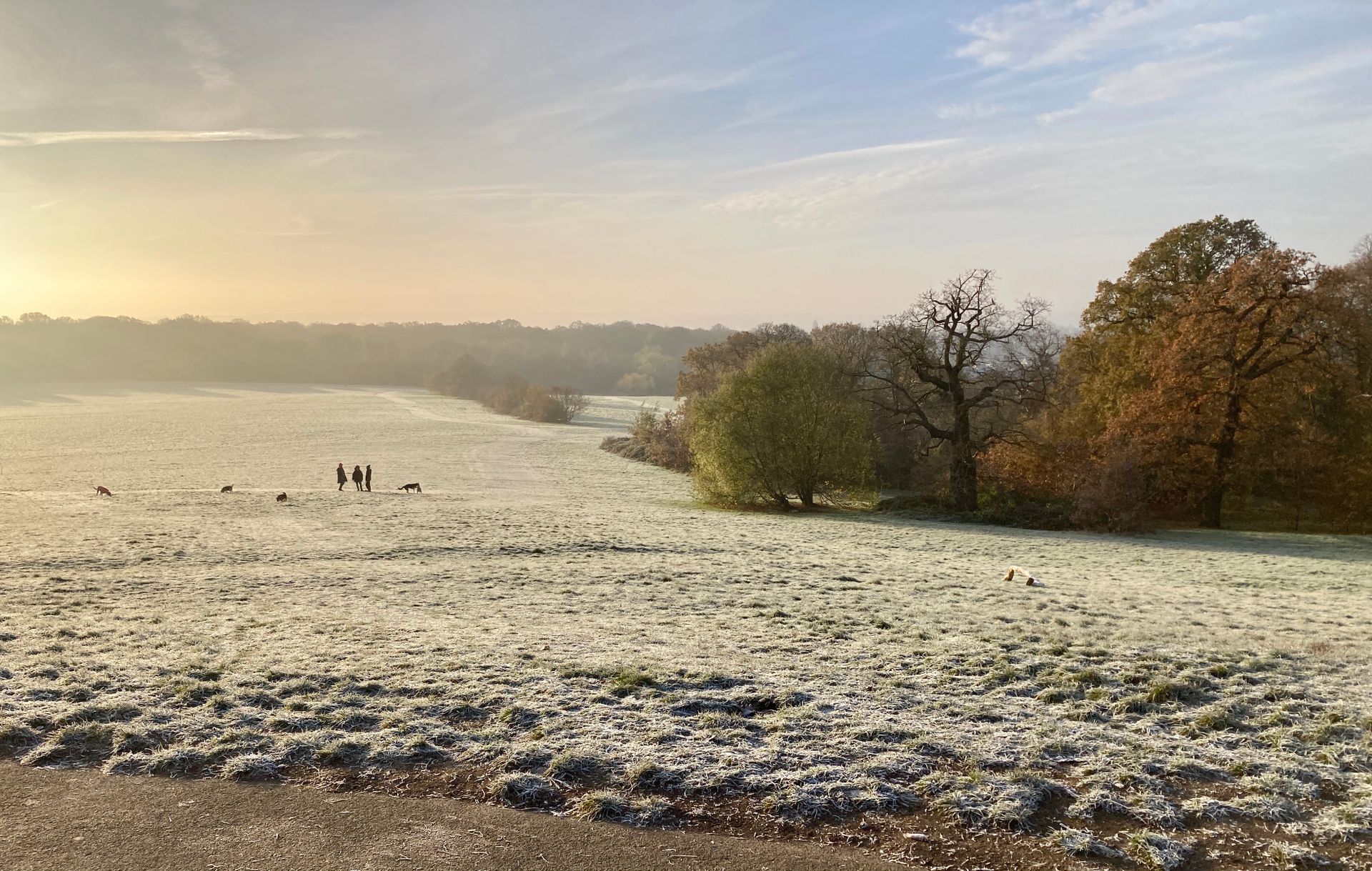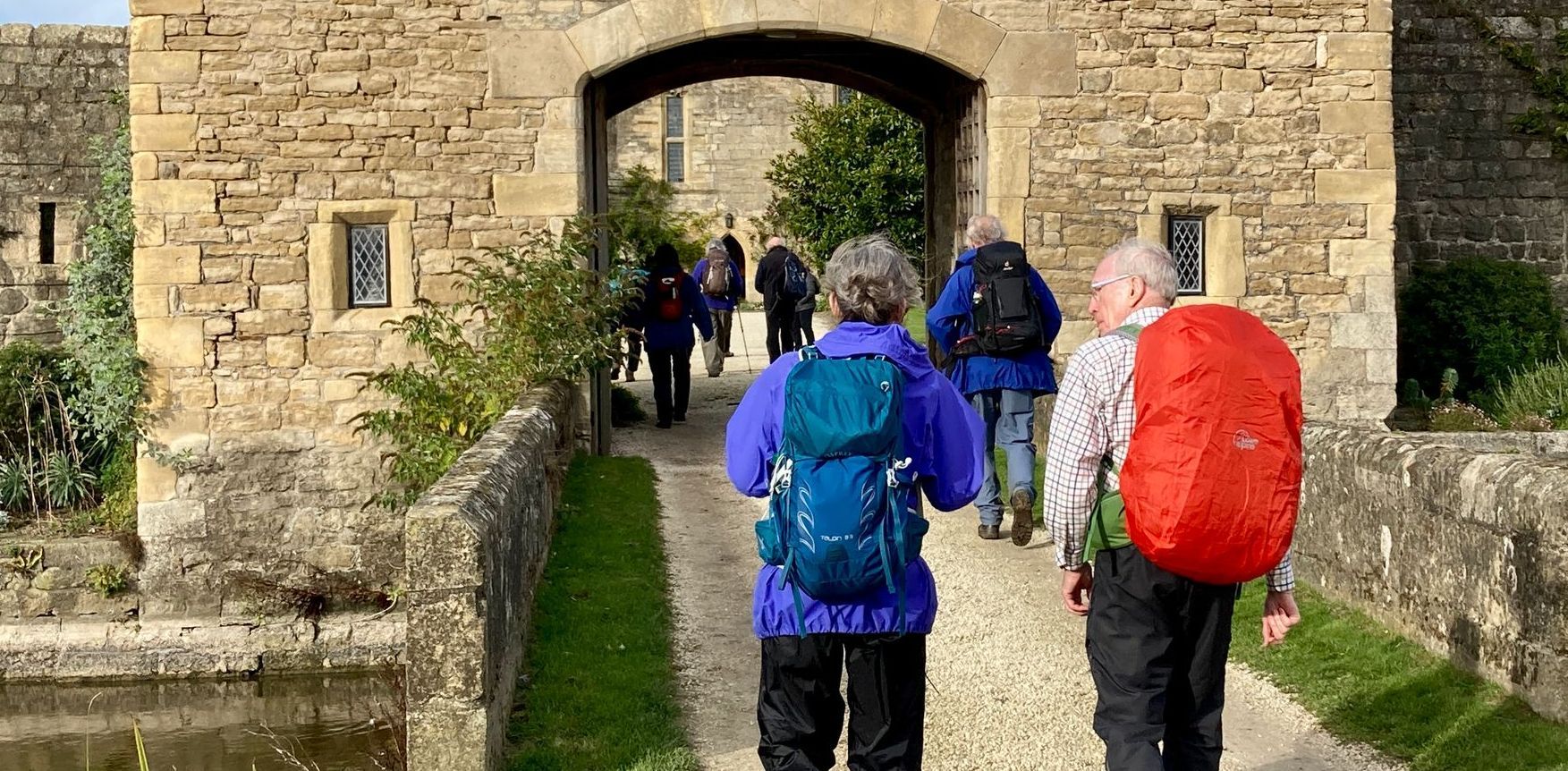Walking in Silent Solidarity
Chaucer tells us that April is the month when “longen folk to goon on pilgrimages”. April was still six weeks away when I struck out “in felawshipe” with a company of pilgrims for Canterbury. Like Chaucer’s pilgrims, we were heading for Canterbury Cathedral, the site of Thomas Becket’s murder in 1170. Unlike Chaucer’s pilgrims, we were to do no storytelling on the way. This was a silent pilgrimage, organised by the British Pilgrimage Trust, along the final seven miles of the Pilgrim’s Way.
As I am a pilgrimage scholar, walking pilgrim routes was not new to me. What was new, however, was the idea of walking in a group in complete silence. As I arrived at the attractive village of Chilham for the start of the walk, I couldn’t help wondering how the day would pan out.
How would I fare being unable to speak to my fellow pilgrims? Would the silence be broken over lunch, and would we be expected, like medieval monks, to communicate in sign language? The walk had been advertised as “deeply contemplative”, which prompted other worries in someone who wasn’t particularly given to contemplation.
The walk began in St Mary’s, Chilham. I found myself among a group of 25 pilgrims — 22 women and three men — in regulation pilgrimage gear, which, in our modern times, includes hiking boots, a waterproof jacket, and a daypack. Dawn Champion, our enthusiastic guide, additionally sported a “pilgrim badge” pinned to her shirt: a large cardboard sign warning passers-by that we were on a silent pilgrimage, lest they take offence at our failure to return their hearty vocal greetings.
Before heading out, we were given a short brief for the day, which included our itinerary and instructions on how to request a toilet stop (a hand signal forming the letter T). Then we were each handed a candle (a tea light) and invited to make our intention for the journey. We held our lighted candles in cupped hands while Dawn recited W. H. Davies’s poem “Leisure”, and sang the medieval song “Sainte Marie virgine” in praise of the Virgin Mary. This combination of Christian and secular spirituality is a hallmark of the British Pilgrimage Trust, and there would be more as the day progressed. We extinguished our candles to symbolise the start of the journey, switched our phones to “silent”, and set off.
Heading out of the village in what could be called “companionable silence”, the group threaded its way into the Kentish countryside. The route took us through quiet villages, across open fields, and past tracts of commercial orchards characterised by regimented blocks of skeletal apple trees still in their winter sleep. We crunched over carpets of bleached and desiccated leaves — the vestiges of last autumn’s windfall — and wound our way beneath the bare branches of coppiced woodland.
It was not my first time on the Pilgrim’s Way. As a keen hiker in the 1990s, I had eagerly tramped the 130 miles from Winchester Cathedral to Canterbury when long-distance walking was growing in popularity. At the time, the Pilgrim’s Way was considered a secular heritage trail, and, had I described myself as a pilgrim, I would probably have been met with a few raised eyebrows. Outside Catholic circles, popular culture had generally consigned pilgrimage to the history books.
Today, of course, much has changed. Pilgrim routes have opened up across the country — many offering pilgrim passports in imitation of the Camino de Santiago in northern Spain — and calling oneself a pilgrim is no longer considered odd.
Gone, too, is the assumption that pilgrimage in this country is practised only by Christians. The British Pilgrimage Trust, founded in 2014 to revive pilgrimage walking in Britain, rigorously promote a “Bring Your Own Beliefs” policy. It’s a diversity ethos to which my fellow pilgrims that day clearly endorsed. Among my walking companions were those who identified as Muslim, Buddhist, agnostic, pagan, and “spiritual but not religious”. About half were Christian, mostly Anglican.
Interestingly, the age demographic was less diverse. Although the ages of the pilgrims ranged from 43 to 70, most of the participants were in their fifties and sixties. There was little indication that this particular pilgrimage appealed to the younger generation.
Dawn told me that the event had proved so popular that it was over-subscribed. She also said that it had attracted an unusually high number of Christians — more than the usual 40-per-cent average. There are clearly some pressing questions here. What is the draw of a silent pilgrimage? What does walking in silence add to the pilgrimage experience? And why did so many Christians sign up to an event that is more “spiritual” (in the modern parlance) than religious?
I put these questions to a few of my fellow pilgrims before the start of the walk. To my surprise, many were first-time pilgrims, and they told me that it was the combination of walking and contemplation which they found so appealing. One lady, a veteran of many Christian retreats, described the pilgrimage as a “walking retreat”.
A handful had come from London, and were looking for something different in a day out in the country. Others voiced more prosaic benefits of a silent pilgrimage. I overheard a couple of mothers joking that it was an opportunity to escape the noisy, frenetic environment of the family home.
We stopped for lunch at No Man’s Orchard — so called because it straddled two parishes — tucking into our sandwiches amid the grand but gnarled remnants of ancient apple trees. Dawn had given us “permission” to speak at lunchtime, but no one seemed particularly keen to do so. It wasn’t easy to break out of the silent habit.
In the afternoon, we continued through more silver-birch woodland and crossed the noisy A2. As we drew nearer to our destination, the route was punctuated by stops at places of historic interest. These included the Iron Age Bigbury Camp, a holy well on the site of a former medieval leper hospital, and St Dunstan’s, containing, hidden away in the crypt, the head of Thomas More.
These evocative locations afforded the group ample opportunity to engage in the “pilgrimage-specific practices” described on the British Pilgrimage Trust website. Following Dawn’s lead, we lay down on the grassy ramparts of Bigbury Camp for some “looking at the sky meditation”; “circumambulated” St Nicholas’s, Harbledown; and “took the waters” at the Black Prince’s Well (once Dawn had filtered out the impurities).
Unable to enter St Michael and All Saints, we tentatively but gamely undertook a spot of barefoot walking in the graveyard, and pressed our foreheads to the cold stone of the exterior wall. It was these private, sensory interactions with the world around which, for me, differentiated this pilgrimage from those with which I’m more familiar. Dawn, who had come from a heritage background, also explained that these silent walks brought out an important difference between tourism and pilgrimage. While tourists related to places on a factual, objective level, pilgrims connected to them intuitively, and in a more personal and spiritual way. Pilgrims, she said, experienced places differently.
Our final stop before Canterbury Cathedral was St Dunstan’s, famed as the location where King Henry II donned a hairshirt to begin his 1174 penitential pilgrimage to atone for Thomas Becket’s death. Thankfully, hairshirt-wearing wasn’t among the pilgrimage practices encouraged by the trust, and we instead enjoyed a recuperative few minutes of contemplation in the nave, before a final round of candle-lighting to remind us of our journey intentions.
I should admit at this point that I wasn’t the most successful silent pilgrim. I lost my candle somewhere along the route, and, as we entered the city through the West Gate, and weariness set in, I forgot we were not supposed to talk, and tried to engage a fellow pilgrim in conversation. I was met with a stony silence, and finally a soft reproof: “If you don’t mind, I’d like to keep the silence until we arrive at the cathedral.” A failed silent pilgrim, I hung my head in shame for the remainder of the walk to the cathedral. Perhaps I was more suited to the jovial Chaucerian kind of pilgrimage than a walking silent retreat.
And yet, walking in silence had, for me, also been an enjoyable and relaxing experience. Yes, you can walk alone in silence, but being part of a group frees you from the anxieties that often beset the solitary walker: the fear of losing the path, of mistiming the walk, or, for women, a concern about safety. There was something comforting about walking in the presence of others, of being in a “safe space” for a few hours, and allowing your thoughts and sensations to enter freefall. And silent walking, of course, affords the opportunity for quiet spirituality, whatever your faith.
More surprisingly, I found a silent pilgrimage strangely liberating. On a silent pilgrimage you’re released from the unspoken obligation of making small talk with your fellow walkers, and free to immerse yourself in the landscape around. As Guy Hayward, co-founder of the British Pilgrimage Trust, said to me, as human voices tune out so nature tunes in. “Birds sing more, and the wind through the trees, running water, and sounds of nature become more present.”
My favourite memory of the day — caught on my cameraphone — was when, literally out the blue, a mistle thrush burst into song above our heads. In the absence of conversation, no one missed this fleeting event. Heads turned upwards in unison — and, suddenly, we weren’t separate individuals lost in our disparate thoughts, but a community of pilgrims walking in solidarity, absorbed in the same moment at the same time.
Dr Anne E. Bailey is an Associate Member of the History Faculty, University of Oxford, and has published on medieval and modern pilgrimage.
This article is reproduced by permission of the Church Times.
Photographs taken by the author.
